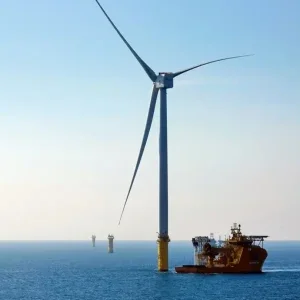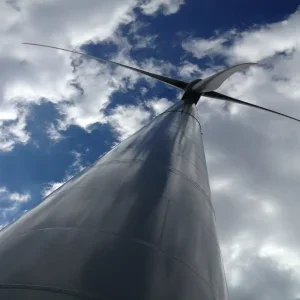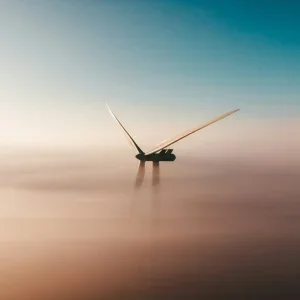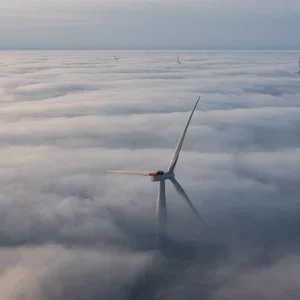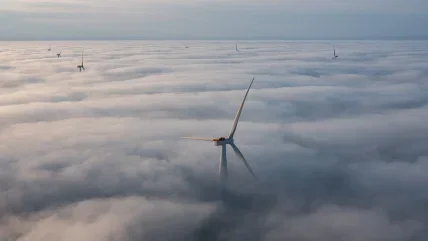
For better or worse, the world’s great oil producers are besieged by cliché. Cast your mind to a town like Houston, Texas, and you’ll soon conjure images of leather boots and Stetsons. Imagine the Middle East and oil derricks mingle with crisp white thobes and towers gleaming in the sun.
But as you continue down the list of petroleum superpowers, past OPEC stalwarts like Saudi Arabia or Kuwait, you may spot a surprising name. Coming in as the 14th largest oil producer on Earth, just between Mexico and Qatar, is Norway. It’s hardly a nation of Stetsons, but oil and gas derricks off the North Sea provided the Norwegian exchequer with $140bn in 2022, representing roughly a quarter of the nation’s GDP.
If anything, this bounty is even more striking when you consider what Norway is known for internationally: being a quiet, modest nation, and one keenly supportive of environmental activism. Nor are stereotypes really necessary here.
In 2016, for instance, Oslo unveiled plans to go completely carbon-neutral by 2030, two decades earlier than originally scheduled. That’s shadowed in practice too: 99% of Norway’s domestic electricity needs are met by sustainable hydroelectric power, making use of the fjords and rivers so famed across Scandinavia.
But with all those oil and gas refineries remaining fundamental to the Norwegian economy – and funding a generous welfare state – how to weigh the country’s ambitious green targets with its geological endowment? One potential answer can be glimpsed in the chilly waters 85 miles off Norway’s coastline.
Here, at a site called Hywind Tampen, the Equinor energy giant has installed 11 floating turbines, which supply two nearby oil and gas installations with roughly 35% their energy needs. Not that Norway can square the circle of its energy portfolio quite so easily. From the continued climate impact of oil and gas, to challenges around cost, the country still has plenty to do to consider.
Norse ideas
Perhaps surprisingly for a country regularly battered by chilly North Sea winds, Norway has traditionally remained aloof to the potential of wind energy. In large part, suggests Stuart Leitch, that’s simply down to the range of decent alternatives.
“The largest share of electricity produced in Norway comes from hydropower, with over 90% of the [nation’s] electricity produced by hydropower for the past 20 years,” explains Leitch, the new energies research manager at Westwood Global Energy Group. “With the hydropower infrastructure in place, Norway has been an exporter of its produced oil since 1972, shortly after first production from the Ekofisk field in June 1971.”
That last point is important. Though Norwegians haven’t needed to power their houses or factories with oil and gas, these planet-harming industries have grown to dominate the country’s economy. “It’s for my pension, I’m told,” jokes Øistein Schmidt Galaaen, the production and sustainability director at Renewable Norway, an Oslo non-profit.
“With the increasing demand for decarbonisation of industries across Norway, supply from the national grid is becoming constrained and therefore the offshore sector has looked to alternative energy sources for provision of power, such as wind.”
Yvonne Telford, Westwood Global Energy Group
Over recent times, however, Norway’s comfortable energy mix has come in for criticism. In August 2023, after the government approved 19 new oil and gas projects worth $18bn altogether, a representative from Young Friends of the Earth Norway argued the country was “heading in the wrong direction”. From a purely environmental perspective, it’s hard to disagree, especially when you recall that Norwegian politicians of all stripes have awarded 700 oil and gas exploration licences over the past decade.
99%
The percentage of Norway’s domestic electricity needs that are met by sustainable hydroelectric power.
International Energy Agency
With that in mind – and, of course, with the rising understanding that drastic carbon emission cuts are urgently needed – it’s no wonder that an increasing number of insiders are considering how the wind sector could help.
88MW
The total installed capacity of the Hywind Tampen floating wind farm.
Equinor
“With the increasing demand for decarbonisation of industries across Norway,” explains Westwood’s research director, Yvonne Telford, “supply from the national grid is becoming constrained and therefore the offshore sector has looked to alternative energy sources for provision of power, such as wind.”
If anything, this is apparent from the numbers, with Norwegian wind production hitting 14.8TWh in 2022 – up from just 1GWh at the start of the millennium. That’s echoed by other developments. Especially since reforms to the permitting system that give local municipalities more say about where and how turbines are built, Galaaen notes “there’s a stronger and renewed political wish for more onshore wind”.
That’s clear, at any rate, when it comes to onshore production. In December 2022, to give one example, a trio of companies said they were partnering to build around 50 wind turbines near Høyanger, in the mountains north of Bergen. That’s echoed by offshore production, too.
In 2022, Prime Minister Jonas Gahr Støre stated that he wanted to allocate 30GW of offshore wind capacity by 2040 – representing more electricity than Norway currently consumes per annum. Like with landlocked developments, moreover, these aspirations dovetail with real-world action. In March 2023, Støre opened its first tenders to build offshore turbines in an area off southern Norway that are enough to power 460,000 houses.
Taking it slow
Though efforts are sure to hearten critics like Friends of the Earth, they still leave Norway’s vast oil and gas reserves untouched. Hywind Tampen, however, could provide a way forward.
Boasting a capacity of 88MW, this is the world’s largest floating offshore wind farm. But unlike other projects, Hywind Tampen isn’t there to power the 5.4 million people who call Norway home. Rather, by powering the nearby Snorre and Gullfaks offshore oil and gas fields, developers Equinor hope to mitigate some of the sector’s worst environmental effects.
In a theoretical sense, this feels sensible. Traditionally, such petroleum installations are powered by gas turbines, even as Galaaen argues “there’s a clear climate benefit to electrifying them with renewables”. But by switching in wind turbines, Leitch explains that a “fully electrified platform has the potential to reduce its offshore emissions by up to 90%”.
So far, so green. But there’s obviously a problem here. For if Hywind Tampen promises to make Norwegian oil and gas more sustainable in the first instance, it does nothing to mitigate its impact downstream.
“While platform electrification can help reduce emissions associated with the extraction process,” Leitch warns, “it is still ultimately a fossil fuel which is being extracted”, adding that 90% of fossil fuel emissions actually come from being used as hydrocarbons in cars and aircraft. Nor do the issues with projects like Hywind Tampen end there.
They may be sustainable in theory, but the wind doesn’t always blow, and oil derricks will therefore always need alternative power sources to carry on functioning. Naturally that increases costs ≠ hardly helped, says Bahzad Ayoub, another Westwood expert, by economies of scale. Because its only function is to fuel the Snorre and Gullfaks fields, Hywind Tampen has a total installed capacity of around 88MW. By way of comparison, Ayoub points out, in January 2022 the average capacity of wind farms awarded leases in the ScotWind leasing round was over 1.7GW.
There are potential workarounds here. One answer, Ayoub suggests, could be to build big immediately and send any excess power that is not needed by oil and gas installations to the onshore electricity grid. But powering towns and cities via offshore turbines is always expensive, particularly when relying on pricey floating platforms.
It’s surely no coincidence that in May this year Equinor indefinitely postponed its Trollvind offshore wind initiative, citing rising costs as one factor. Like Hywind Tampen, Trollvind was supposed to provide clean power to nearby oil and gas installations – and like Hywind, the Trollvind turbines were also meant to float on platforms.
Will oil be back?
Amid all this disorder, one solution could plausibly be to abandon offshore turbines together and instead drastically ramp up onshore wind production. When you consider Norway’s mountainous landscape, as well as the fact that population density is just 15 people per square kilometre – England has 434 – this option seems even more appealing, no doubt reflected by schemes like the one near Hoyanger. Yet here, too, weighing environmentalism with broader societal concerns isn’t straightforward. Though hardly a natural opponent of wind farms, Greta Thunberg has fiercely protested against a pair of wind farms in western Norway, arguing they violated the rights of the native Sami people, in particular harming their reindeer herding culture.
1.7GW
The average capacity of wind farms awarded leases in the ScotWind leasing round in January 2022.
Marine Scotland
The Supreme Court in Oslo ruled against the turbines in October 2021, making the argument as much legal as societal. Even so, it speaks once more to the immense difficulties this country, alongside many others, face when balancing the demands of the planet with those of the people who live there.
“It’s fair to say that Norway has had a strong financial interest in keeping the oil and gas activity up and running,” concedes Galaaen – even as he acknowledges that “now we need to speed up the transition” towards renewables. But what that balance is and how exactly Norway reaches it remains decidedly unclear.


